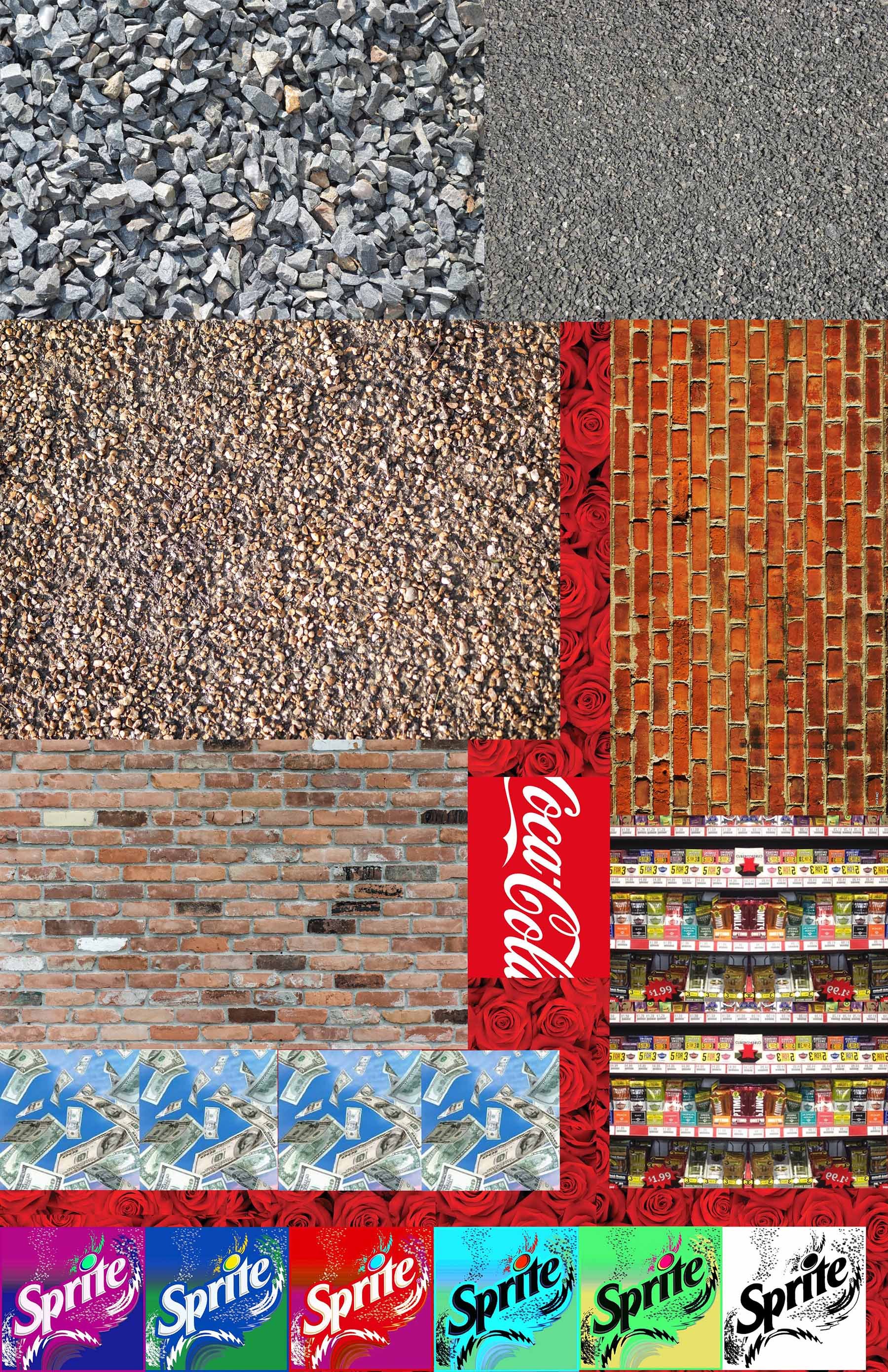News, Tweets, selfies, searches, playlists, ads—Kahlil Robert Irving’s digital collages collect, compress, and archive segments of the infinite information onslaught. Like his sculptural and paper-based works, which integrate elements of replicated and real detritus found on the streets near his St. Louis home, his virtual assemblages cull together what Hito Steyerl calls “the trash that washes up on the digital economies’ shores” of his daily communication streams to create diaristic tableaux expressive of both the general excess of it all and the particularity of his lived experience. Here, the condition of the internet is no different from the condition of asphalt to the walker, in which so much of Irving’s artworks are symbolically embedded: both are unevenly shared infrastructures. The internet, in this sense, is yet another hybrid aggregate and mundane technology of control, legislating dis-connective routes through the local and the global.
While the collages above are presented to resemble a simulacrum of a digital scroll, most were created over the past four years for installations in real space, where they covered museum and gallery walls in St. Louis, Cincinnati, and New York. For those installations, visitors could physically navigate the works’ immersive scale and intimate details—enacting the process of seeking smaller points of connection amid an overwhelming milieu. From rage to elegy, nonsense to scholarship, the historical to the immediate, Irving’s imagery collapses the hierarchy of what’s swiped through and what’s zoomed in on. The McDowell’s arches from “Coming to America”; an obituary for the actor Chadwick Boseman; a YouTube clip of a James Baldwin interview. Dr. Martin Luther King, Jr. and Malcolm X laying at rest near a photo of Derek Chauvin wearing a mask during his murder trial. A cellphone buried in asphalt echoing a thumbnail version of a collage buried within a larger collage. Numbers tallying “confirmed cases,” death tolls, unread messages, and lottery bids. A still from a virtual Art Basel event titled “Decolonizing Ethnography” displaying memes of arguing white men, one quoting Eve Tuck and K. Wayne Yang and another quoting Edward Said. Blue and white pottery, synthesizing legacies of culturally appropriated techniques, floating amid imagistic tumult. Screen shots of curatorial meetings; photos of the artist’s mother; photos of the artist himself. Ceramic decal sheets of red roses and gravel, blue skies and the starry cosmos, and the full spectrum of logos for Coca-Cola and Sprite. Screen shots of song tracks by Tracy Chapman, John Coltrane, or the Gap Band, suggesting an ongoing soundtrack.
These are collective stories inscribed on an intimate one and vice versa; whatever’s writ large has bearing on Irving as a person, artist and observer. In that sense, Irving’s work grapples with Black subjectivity as well as its collectivity—of where he lies within larger structures of identification. Each digital collage is perhaps a kind of aggregate meme that takes up Aria Dean’s point that “for blackness, the meme could be a way of further figuring an existence that spills over the bounds of the body, a homecoming into our homelessness.” Irving seems to arrive at this by way of poet Bernadette Mayer’s experimental journaling methods, or “emotional science project[s],” located in the everyday—finding not one story but a lyrical form in the machinery of the epic, indexical and algorithmic.
—Jessica Baran










